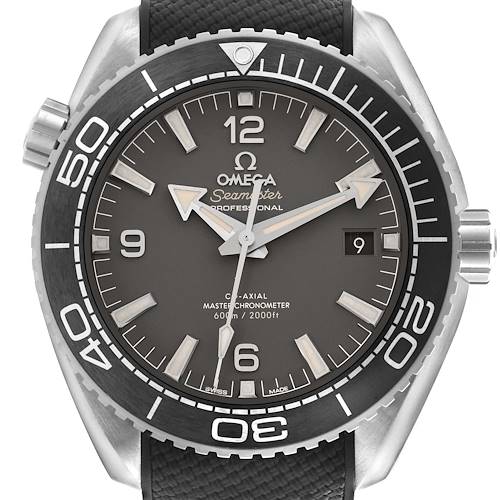- CALL US (404) 814-1814
- LIVE SUPPORT
- EMAIL US
-
WISHLIST (0)
-
CART(0)
Omega Planet Ocean Watches
15 MATCHES FOUND
Featuring robust cases, a unidirectional bezel, luminous hands and indices, and water resistance of up to 600 meters, the Planet Ocean seamlessly marries functionality with style and elegance. Crafted to endure the venturesome spirit, these timepieces harmonize engineering prowess with Omega's signature sophisticated design. While ideal for deep-sea exploration, the Omega Planet Ocean effortlessly transitions to complement your urban lifestyle. Admire the striking aesthetics and unparalleled reliability of the Omega Planet Ocean as it captivates with its perfect fusion of form and function.
IN STOCK
SwissWatchExpo ARCHIVE - RECENTLY SOLD
Introduced in 2005, the Omega Planet Ocean line swiftly gained prominence in the realm of luxury diving watches, becoming an integral part of the Seamaster collection. Engineered to endure the challenges of deep-sea exploration, these timepieces boast exceptionally durable cases, unidirectional bezels, and a water resistance capability of up to 600 meters. With a steadfast dedication to precision and resilience, the Planet Ocean stands as a reliable companion for any underwater expedition.
The aggressively sporty aesthetic of the Omega Planet Ocean, coupled with innovative materials, advanced movements, and evolutionary designs, has positioned it as the preferred sports watch not only among divers, but also among enthusiasts of high-end timepieces. While flaunting impressive features such as 600m water resistance and anti-magnetic properties, the Planet Ocean maintains a lighthearted design approach, offering a wide array of colors, materials, and straps, rendering it a fun and accessible watch.
Over the past two decades, the Planet Ocean line has witnessed significant technological advancements, including the incorporation of the Master Chronometer certification in models like the Planet Ocean 8900 series, setting new benchmarks for precision with accuracy up to 0 to +5 seconds per day, and resistance to magnetic fields of up to 15,000 gauss. The more recent Ultra Deep models have further pushed the boundaries of watchmaking, achieving a groundbreaking water resistance of 6,000 meters. These innovations ensure that the Planet Ocean continues to lead the way in dive watch technology.
How to Sell My Omega Planet Ocean
Sell or trade-in your Omega Planet Ocean for the best price with SwissWatchExpo. SwissWatchExpo makes it easy to sell or trade in your used or pre-owned Omega Planet Ocean to keep your luxury watch collection fresh!
Frequently Asked Questions
What Is An Omega Planet Ocean?
The Omega Seamaster Planet Ocean 600M is a collection of diving watches for professional and recreational divers. These watches are part round, part tonneau-shaped, come in various metals and materials, and feature a helium escape valve and unidirectional rotating bezel. They are water-resistant to 600m (2,000 feet). Equipped with state-of-the-art calibers, they are also resistant to shocks and magnetic fields.
What Is The Water Resistance Level Of Omega Planet Ocean Watches?
The main collection of the Omega Planet Ocean is equipped with 600m (2,000 feet) water resistance, from the time-only models to the GMT, Chronograph, and ceramic sub-collections. In 2022, Omega introduced the Planet Ocean Ultra Deep, a line of watches water-resistant to 6,000m (20,000 feet). This new collection also meets the ISO 6425:2018 standards for saturation divers' watches.
















